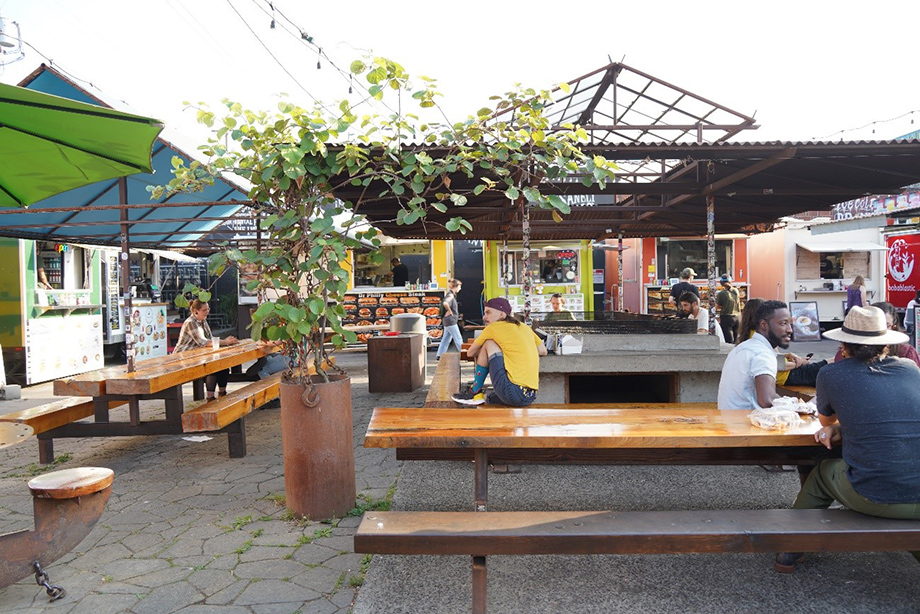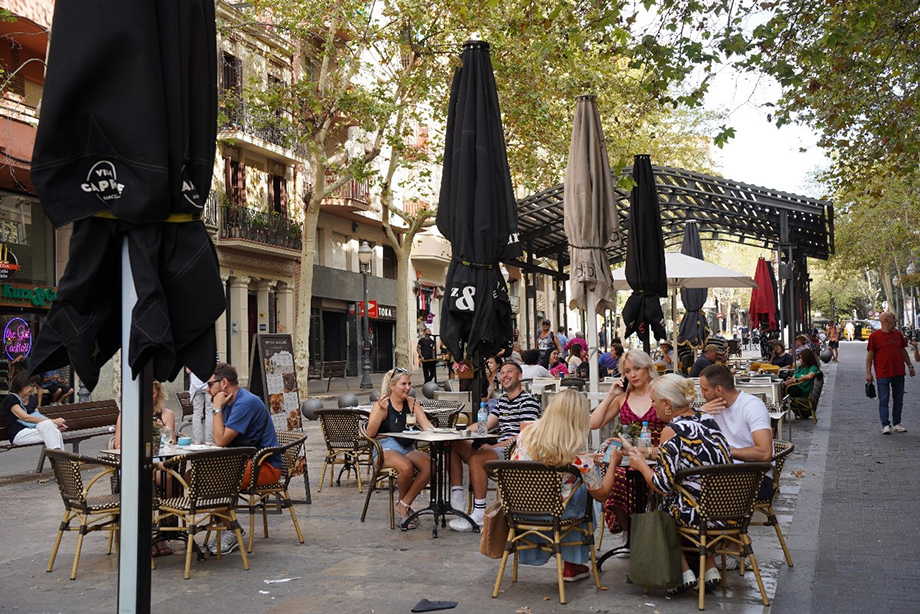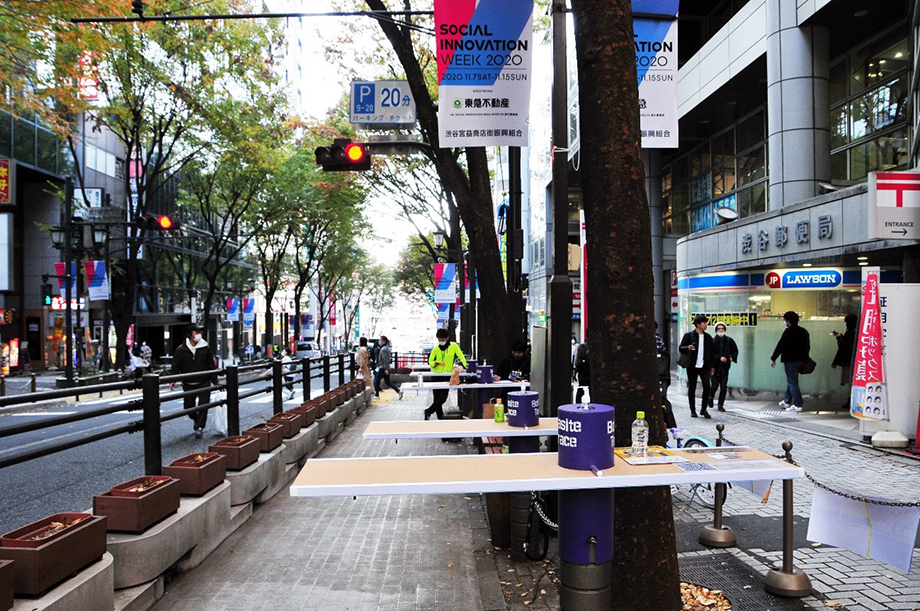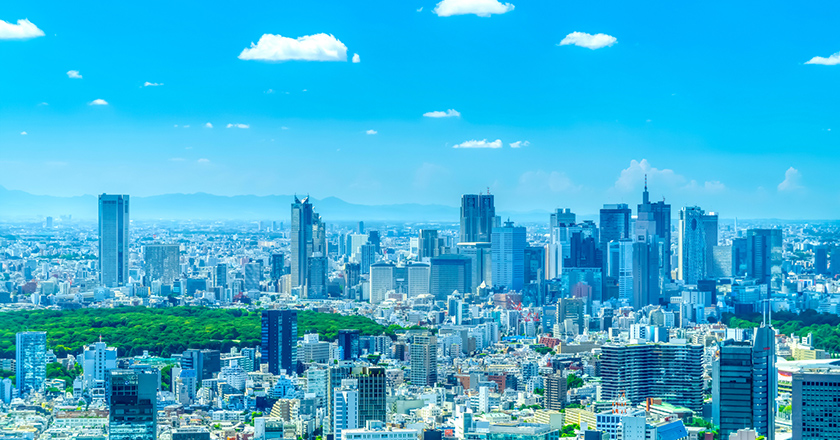Open spaces are made up of people’s activities in Japan
While architecture refers to each building in the context of architectural design, a city refers to buildings and the spaces between buildings in the context of urban design. Many of the urban spaces between these buildings are public spaces or semi-public spaces that are open to unspecified people. It is said that the West has a culture of plazas and Japan has a culture of streets, and until around the 20th century, there were almost no plazas in Japanese cities, and streets were the main public space at that time.
While Western plazas are designed spaces built into the urban fabric from the beginning, spaces that function like plazas in Japan are often turned into plazas by people’s activities in areas that were not originally planned, for example, demonstrations held in front of stations. In Japanese, there is a way of perceiving a place called “kaiwai” (a neighborhood), which is also defined by the activities of people who gather there, such as “Shinjuku 2-chome kaiwai” and “Shibuya Center-gai kaiwai,” which bring a certain image in people’s perception. In other words, one of the characteristics of public spaces in Japan is that activities determine the character of a space, not that activities follow it.
Now such public spaces are about to change rapidly. Particular attention has been paid to the concept of the street. Until now, it has been basically a place for traffic, and streets have been maintained based on the width of the roadway for cars to pass smoothly and the division for people to walk safely. However, as more people are thinking that streets should be seen as important public spaces and play a role in the activities, retention, and interactions, it is now being used differently.
For example, Marunouchi Naka-dori Street in Tokyo was originally just a street in a business district, and no one would walk there on weekends. However, Mitsubishi Estate took the lead in considering the relationship with the street, and when restaurants and shops opened on the street were added to the lower levels of the surrounding buildings, the area itself was accepted as an extension of Ginza, and ordinary people came to visit on weekends. In addition, there is a growing movement to use the street as a public space, such as event venues, and the perception of Marunouchi Naka-dori Street has completely changed.
Owing to the influence of COVID-19, the subject of movement changed from “people” to “programs”
The focus on public spaces is also attributed to an increase in surplus spaces due to social contraction and technological development. As the population decreased, the number of “boxes” began to decrease, and the space between buildings naturally increased, and public spaces are gaining more attention than before. In addition, if autonomous driving becomes widespread in the future, areas in cities that have been allocated as spaces for cars, such as on-street parking zones, will become unnecessary. How are we going to use the surplus space created there? Currently, as it is being called a people-centered street, a major theme is how to transform a space for cars into a space for people.
Another major factor is the change of subject of movement due to the influence of COVID-19. In the past, there was a box called a building, and the subject that moved there was people. They go to the office from home in the morning and come home from the office via restaurants after work. Both offices and restaurants existed as destinations. But when COVID-19 restricted human movement, land use, or programs, began to move.
For example, a program called restaurant was partially replaced by a delivery bag carried by bicycle and started moving around the city. Programs like conferences and classes have rolled into our homes thanks to the proliferation of online meeting systems. The change in the subject of movement is forcing an unprecedented transformation of urban space and architecture. This rapid change by COVID-19 is not limited to Japan, but is a global movement.
Public spaces are beginning to have the same potential as buildings as more programs are moving. For example, in Portland, Oregon, food trucks are gathering to create an outdoor food court. The restaurant district that had been in the building before has emerged in the outside space by acquiring mobility. It can be said that the boundary between buildings and urban spaces is being lost in current cities owing to a rapid shift in mobility.

How do we introduce activity-triggering gimmicks into cities?
One of the leading examples of urban transformation is Barcelona, Spain. Although the city is formed by grid blocks, it is being reconstructed under the concept of “superblocks,” in which nine blocks of 3×3 are considered as a large unit, and the main streets outside of the blocks are used as places for cars, while the square-shaped streets inside are converted into areas for pedestrians. What used to be automobile roads have become pedestrian-only streets, and this is exactly that transformation of streets into plazas. Originally, Barcelona was a city with a wide variety of streets and a very high quality of public space, but the development of superblocks to make the streets public spaces is overwhelming.

In addition, Spanish bars, which are based on the premise of bar-hopping, have been a system that moved people since before the COVID-19 pandemic, and the bars in San Sebastian, in particular, are very wide open to the streets to attract customers. The structure of cities and land use creates a mechanism in which people’s activities are seen in urban spaces. Both Barcelona and San Sebastian have very different but interesting approaches to the way cities are.
It is very important in urban design in the future to shift from a space for mere functional passage to a space for retention. Because public spaces are used by unspecified people, overly deliberate control tends to be difficult to achieve. It is people who create the way space is. How do we introduce gimmicks that trigger activities for unspecified people into cities? In this regard, Japan’s experience in how activities have defined space is likely to give us important hints on how urban spaces should be utilized in the future.
In my laboratory, we have tried to create a place for people utilizing a device called “Bollasite.” At an event to turn Miyamasuzaka Slope in Shibuya into a space for pedestrians, we were asked for cooperation, and we put a top plate on a bollard in front of the post office and built a small counter in the street space. Then the people at the post office started drinking beer they bought at the convenience store after work, and a circle of people started to form. In addition, food delivery staff placed packages before delivery, and people came to the post office to organize paperwork, all of which provided small opportunities for activities in the building to go out to public spaces.

I think it is an opportunity for us, in a sense, to live in a time that needs change. The shrinking of society as a result of population decline is a crisis, but it can also be said that we have reached a point where we can look at things that were ignored until now. As a person working in this field, I believe the necessity to look at the space between buildings should be seen as a great opportunity to enrich cities, including disaster safety.
* The information contained herein is current as of May 2024.
* The contents of articles on Meiji.net are based on the personal ideas and opinions of the author and do not indicate the official opinion of Meiji University.
* I work to achieve SDGs related to the educational and research themes that I am currently engaged in.
Information noted in the articles and videos, such as positions and affiliations, are current at the time of production.

